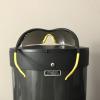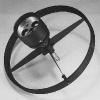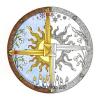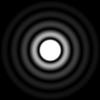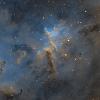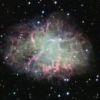How does a modern C5 compare with these 4" refractor variants?: C5 vs Achro, C5 vs ED, C5 vs APO.
After subtracting light loses, the C5 XLT has a throughput equal to a 4" with perfect light transmission. So on non-widefield DSO views how does it compare on objects like M13, M42? Same brightness? Same contrast? And how much of that secondary interferes with planetary contrast vs the clear 4" refractor? I'm just curious... The C5 looks like a very compact alternative to a 4" frac if widefield isn't a priority.
The answer depends on what type of 4" refractor you are considering here. You are quite correct that these SCTs are excellent alternatives to refractors when wide-field observation is not a priority. I have had my share of 4" to 8" SCT-type scopes (Maks and CCs as well), as well as a number of 4" refractors, both basic achromats, as well as ED and SD (APO) types.
First of all, a C5 would be ideal for a small, lightweight mount that is easy to set up and use. Here is a larger C6 actually on a little SW AZ Pronto Alt-Az mount that would definitely be too small to use with a 4" refractor due to its much great length and larger moment of inertia:

Due to its larger aperture, the C5 will show a few more stars in the smaller open clusters like M37, and you will be able to see a few more stars around the outer edge of brighter globular clusters like M13 compared with a 4" refractor, but as far as sheer detail and crispness of the images, a decent ED refractor like the AT102ED will outperform the C5. Stars will be more pinpoint, especially double stars. For planetary and lunar detail on a night of good seeing, an ED refractor will outperform a C5. A 4" APO-type refractor will not only show better detail on the planets and the Moon, and allow you to see small, closely spaced double stars much better, but will also share the one advantage the C5 has over those other 4" refractors, namely the lack of any Chromatic Aberration that creates a bluish fringe around bright targets, especially at higher magnifications. That residual CA is noticeable in ED scopes, and stares you right in the face with achromats. Some people don't seem to mind a little CA, but others cannot tolerate even a hint of it. It's really a personal preference.
Even though on paper the C5 might have the same equivalent light throughput as a 4" refractor, it's all about what a telescope does with that light. The C5 will allow some of that light to scatter, causing stars to appear slightly larger and "softer" that they do in even a decent ED refractor. In fact, a 4" APO with the right diagonal and eyepiece, and provided you have good eyes (which I no longer do), might allow you to tease out the E and F stars in the Trapezium embedded in M42, but M42 in its entirety will look fine in a C5 or any of the 4" refractor variants, even better using a nebula filter.
If you have a mount that has a carrying capacity of about 20 lbs. at least, even one of those 4" APO Doublet refractors will work fine. You can still get by with a 4" APO on a slightly smaller capacity mount, but it will wobble around a little. That can be annoying to some people, but not so much with others. If you like using smaller, lighter weight mounts, then a C5 is a very good choice.
Good luck with your choice!
Edited by Oldfracguy, 10 May 2024 - 01:18 PM.


